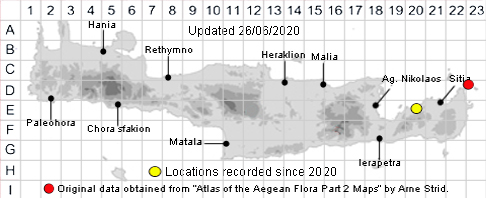SPECIES DESCRIPTION
SILENE FABARIA subsp. FABARIA
Family and Genus:- See- CARYOPHYLLACEAE/Sect. INFLATAE
Common Names:- None
Homotypic Synonyms:- None
Meaning:- Silene (Gr) A name used by the Greek philosopher Theophrastus for
catchfly.
Fabaria (L) Of beans, bean-like.
General description:- Robust, woody-based glabrous and glaucous perennial.
Stems:-
1) 30-80 cm. Suberect, rather stout.
Leaves:-
1) Cauline, in several pairs, scarcely diminishing in size upwards, elliptic-obovate,
glaucous, often mucronate.
Flowers:-
1) Inflorescence, usually with 2 long primary branches bearing irregular dichasia.
2) Calyx, 9-12 mm, ellipsoid, slightly inflated, 10-veined, with faint anastomosing
veins above, teeth triangular, acute.
3) Petal-limb, 3-5 mm, whitish, deeply 2-lobed; coronal scales present.
4) Filaments and anthers, ± purple.
Fruit:-
1) Capsule, 10-12 mm, ovoid, exceeding the closely appressed calyx; carpophore
c. 2 mm.
2) Seeds, 1.2-2.0 mm greyish, face concave; with parallal rows of papillae.
Key features:-
1) Calyx, slightly inflated.
2) Stem, leafy throughout.
3) Capsule, at least 10 mm.
4) Robust plant, to 80 cm.
Habitat:- Mainly on rocky seashores.
Distribution:- Aegean area, also W & C Anatolia. Rare on Crete know only from
the cliffs in the extreme east of the island.
An important new location has been discovered by Christopher Cheiladakis (2020)
in the area of Kavalros east Crete.
Flowering time:- Apr-Aug
Photos by:- Yiannis Christofides & Christopher Cheiladakis
